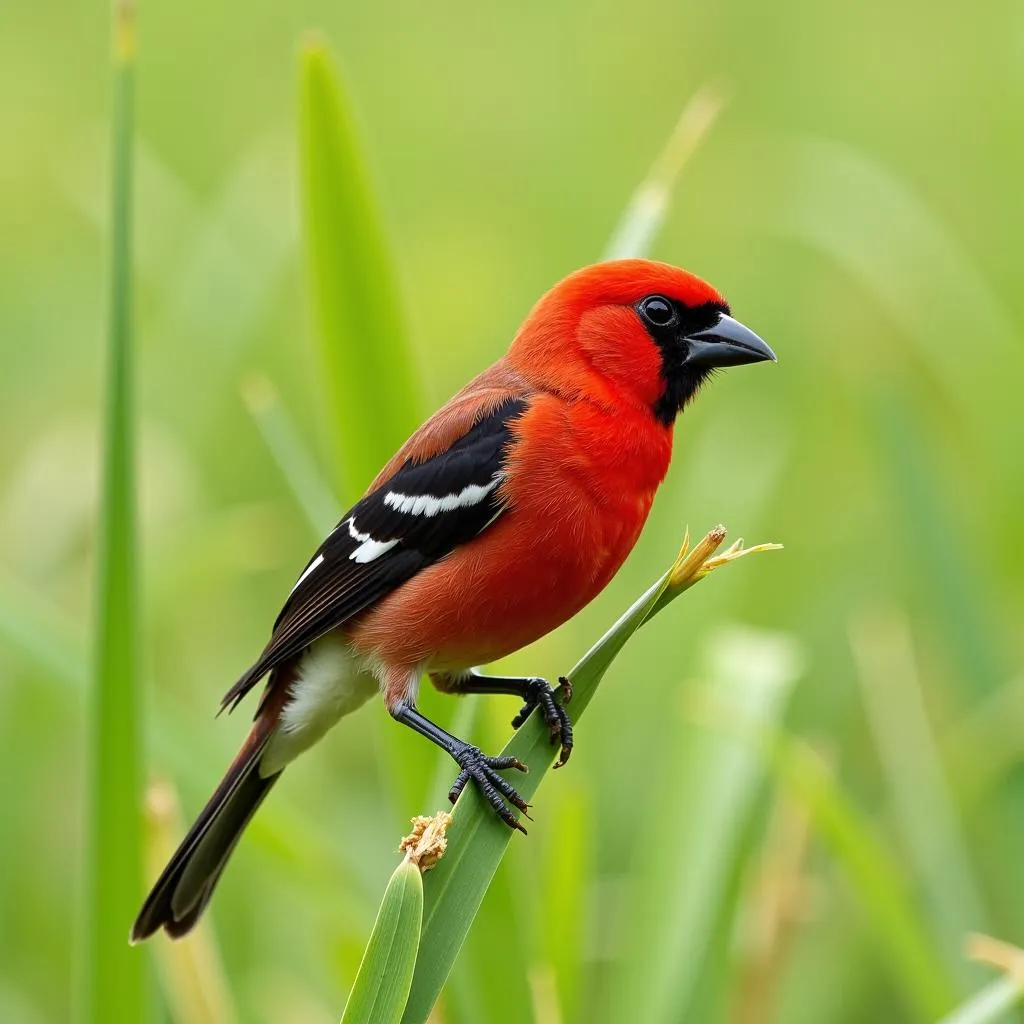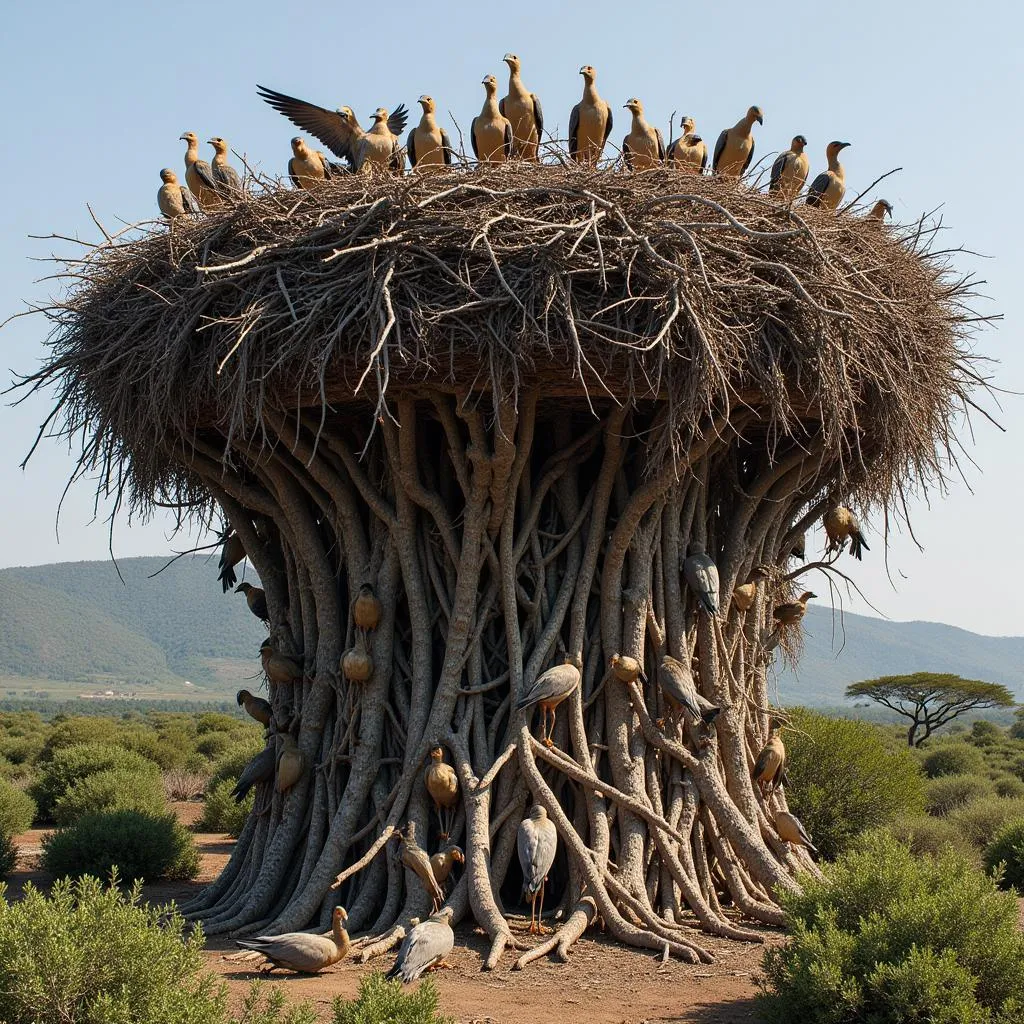Unveiling the Colorful World of African Finch Species
The continent of Africa is renowned for its vibrant biodiversity, and among its many avian treasures are the diverse and captivating finch species. These small, often brightly colored birds bring life and music to the landscapes of Africa, captivating both birdwatchers and nature enthusiasts alike. In this comprehensive guide, we’ll delve into the fascinating world of African finches, exploring their unique characteristics, habitats, behaviors, and conservation efforts.
A Symphony of Colors and Sounds
African finches are renowned for their remarkable plumage, exhibiting a stunning array of colors and patterns. From the vivid red of the Red-billed Firefinch to the intricate markings of the White-rumped Waxbill, each species showcases a unique and captivating beauty. Their melodious songs and calls further enrich their presence, creating a symphony of sound that echoes through the African wilderness.
Diverse Habitats and Adaptations
These finches are highly adaptable, thriving in a wide range of habitats across Africa. From the dry savannas and grasslands to the lush rainforests and wetlands, they have carved out niches in diverse ecosystems. Their ability to exploit a variety of food sources, including seeds, fruits, insects, and nectar, contributes to their remarkable adaptability.
A Glimpse into Their Lives: Breeding and Behaviors
African finches are social birds, often congregating in flocks and exhibiting complex social interactions. Their breeding behaviors are equally fascinating, involving elaborate courtship displays, nest construction, and parental care. Some species, like the Sociable Weaver, create massive communal nests, providing a safe haven for their young.
 Red-billed Firefinch feeding in grassland
Red-billed Firefinch feeding in grassland
Conservation Challenges and Efforts
Despite their abundance, several African Finch Species are facing threats due to habitat loss, climate change, and the illegal pet trade. Conservation efforts are underway to protect these vulnerable birds, including habitat restoration, captive breeding programs, and community education initiatives.
Common African Finch Species: A Closer Look
1. The Red-billed Firefinch (Lagonosticta senegala)
“The Red-billed Firefinch is a true beauty, with its fiery red plumage and bold black markings. It’s a common sight in open grasslands and savannas across Africa. These finches are known for their melodious calls and playful nature.” – Dr. Amani Msoka, Ornithologist, University of Dar es Salaam
2. The White-rumped Waxbill (Estrilda caerulescens)
“The White-rumped Waxbill is a striking example of African finch diversity, with its vivid blue and white plumage and long, pointed tail. These finches are often found near water sources, feeding on seeds and insects.” – Professor John M. Nyamongo, Avian Ecologist, Kenyatta University
3. The Sociable Weaver (Philetairus socius)
“The Sociable Weaver is a fascinating example of communal living, building massive nests that can house hundreds of birds. Their cooperative breeding strategies and remarkable architecture are a testament to their social complexity.” – Dr. Sarah M. Mwakikunga, Wildlife Conservationist, Tanzania National Parks
 Sociable Weaver nest with birds
Sociable Weaver nest with birds
Frequently Asked Questions About African Finch Species
Q: What are the most common African finch species?
A: Some of the most common African finch species include the Red-billed Firefinch, the White-rumped Waxbill, the Violet-eared Waxbill, and the Sociable Weaver.
Q: Where can I find African finches?
A: African finches are found throughout the continent, inhabiting a wide range of habitats from open grasslands and savannas to dense forests and wetlands.
Q: Are African finches good pets?
A: While some African finch species can be kept as pets, it’s crucial to ensure their proper care and well-being. It’s important to research the specific needs of each species and provide them with a suitable environment.
Q: How can I help conserve African finches?
A: You can support conservation efforts by avoiding the purchase of wild-caught African finches, donating to organizations working to protect their habitats, and educating others about the importance of conservation.
Q: Are African finches endangered?
A: While some African finch species are facing threats due to habitat loss and the pet trade, not all species are endangered. However, it’s important to be aware of the challenges facing these birds and support conservation efforts to ensure their survival.
 White-rumped Waxbill perched on branch
White-rumped Waxbill perched on branch
African finches are a testament to the incredible diversity and beauty of the African continent. Their captivating colors, melodious songs, and complex social behaviors make them a delight to observe and study. By appreciating and protecting these fascinating creatures, we can ensure that their vibrant presence continues to enrich the African landscape for generations to come.
